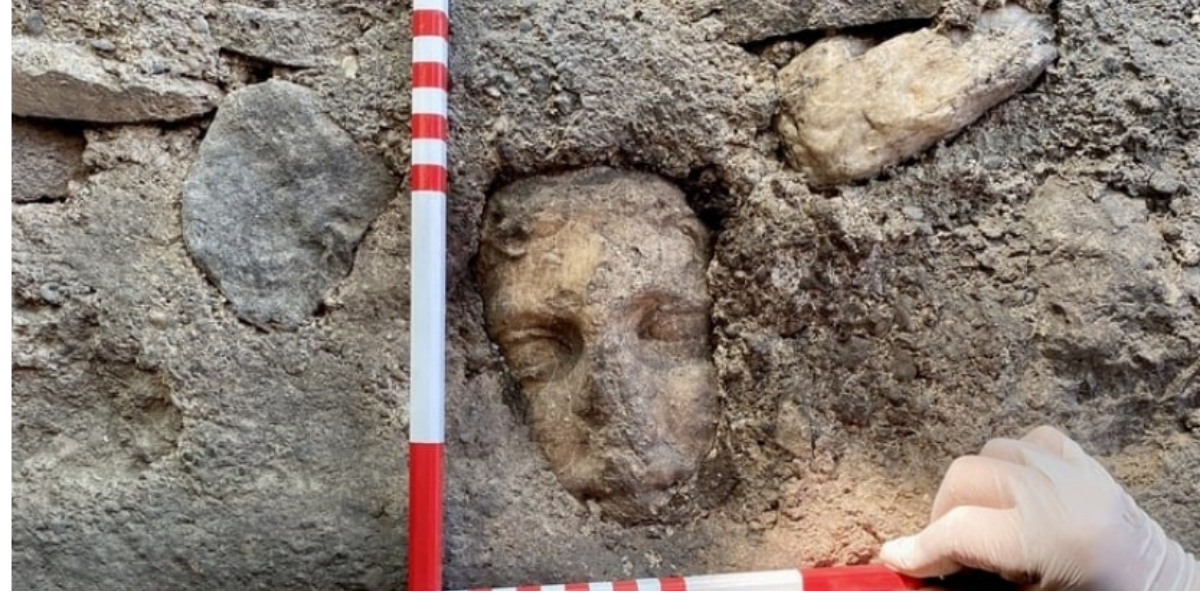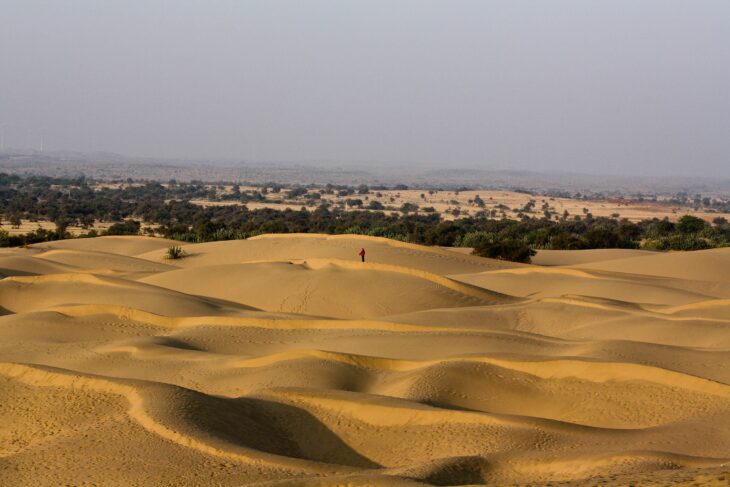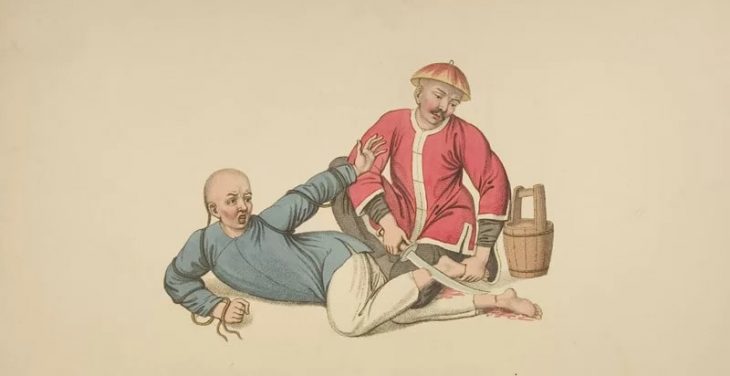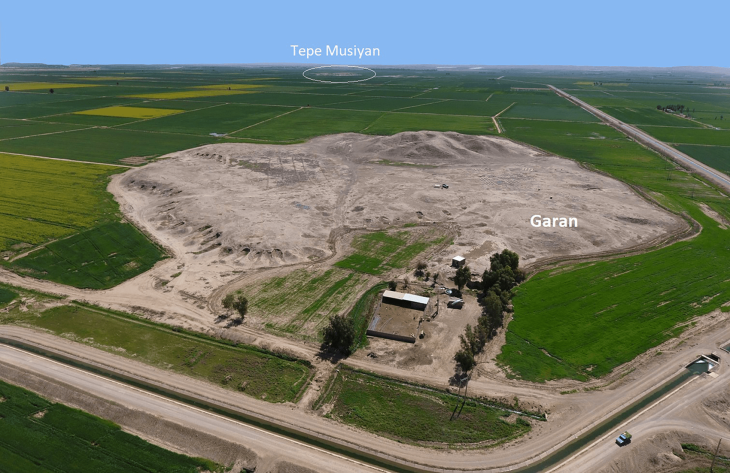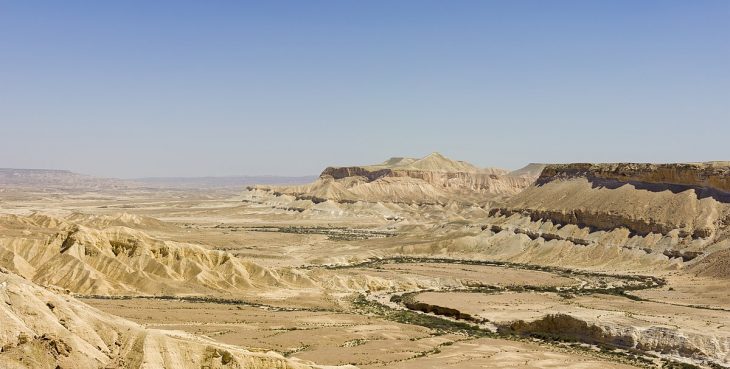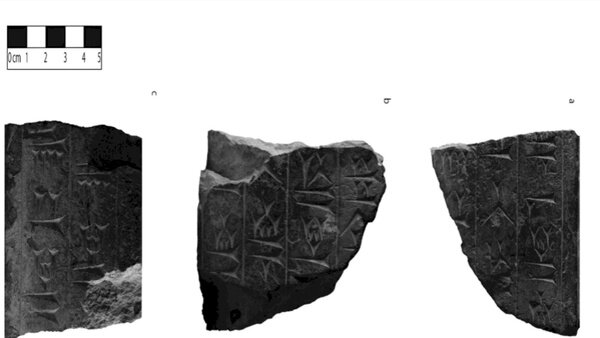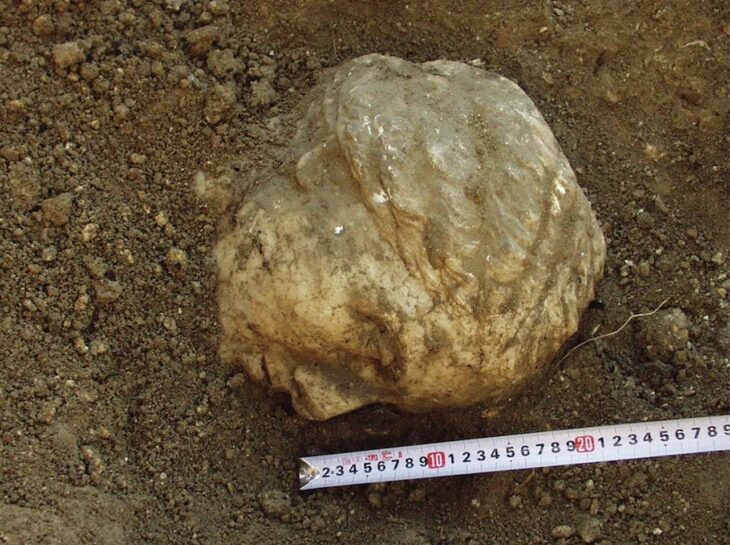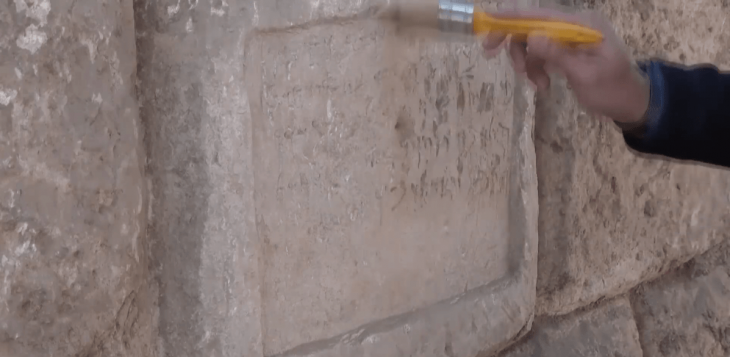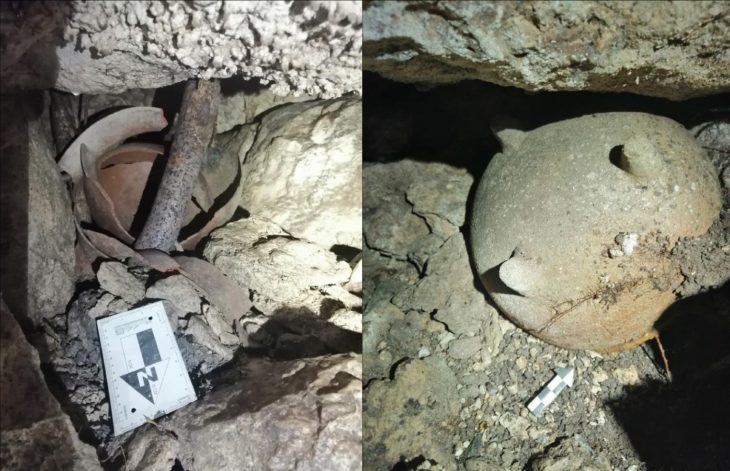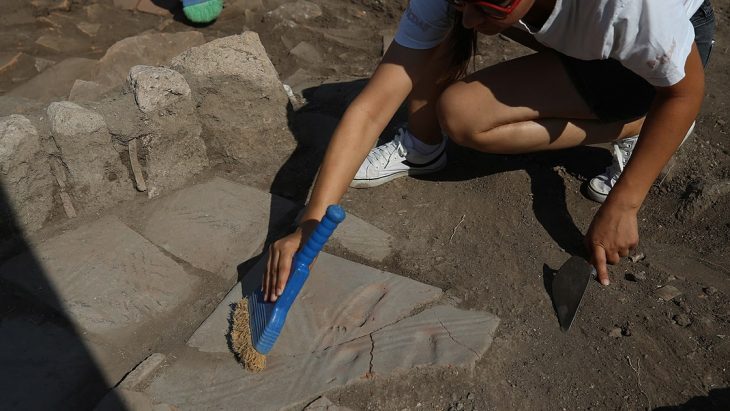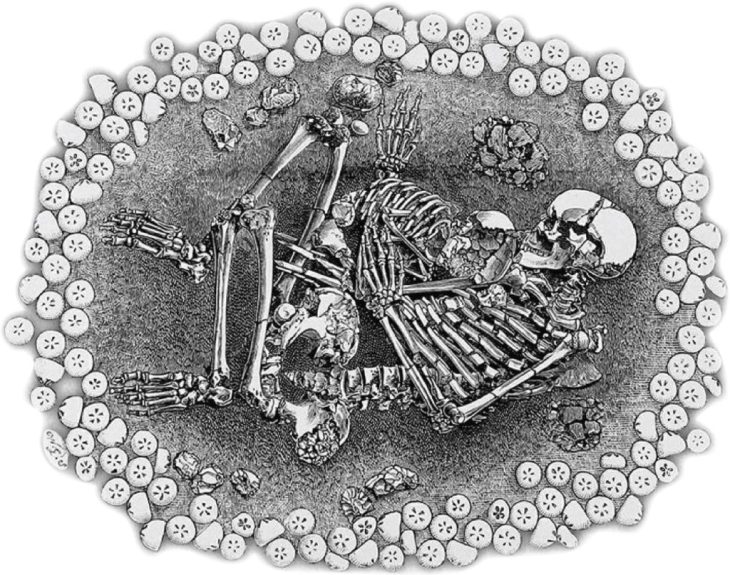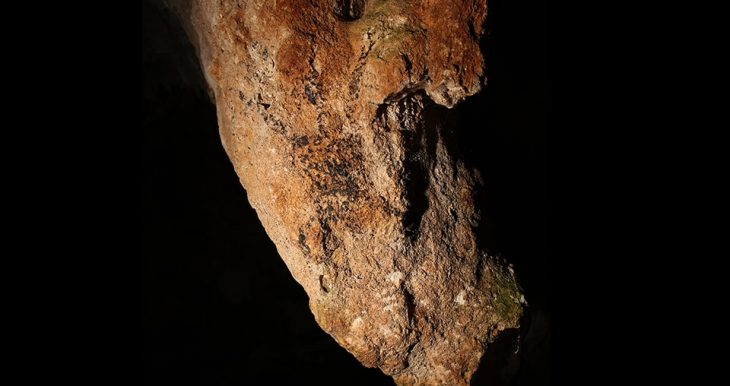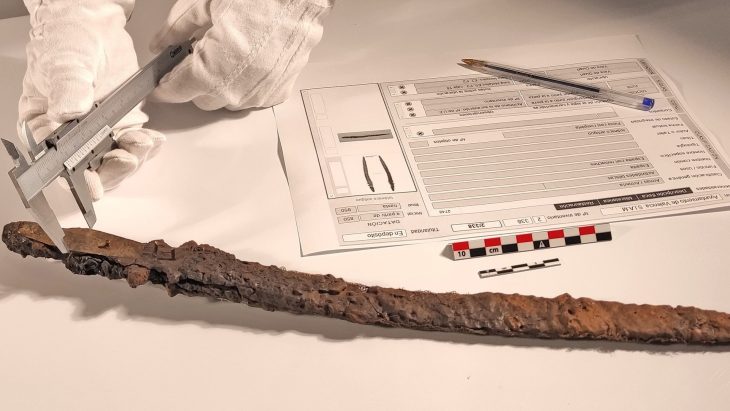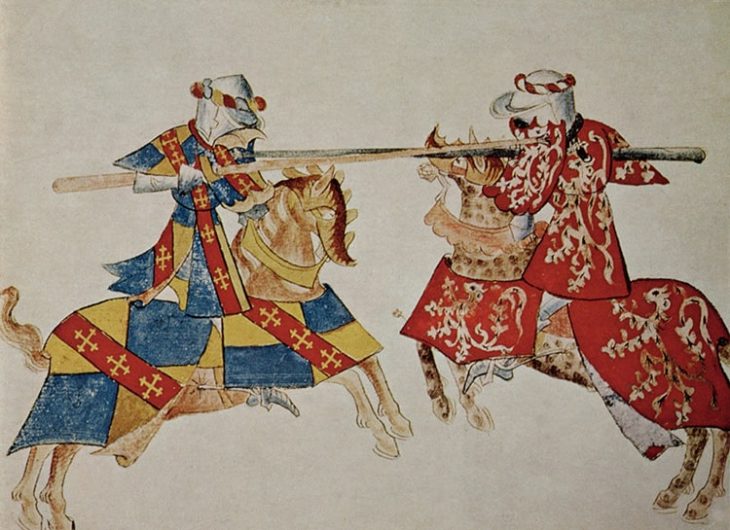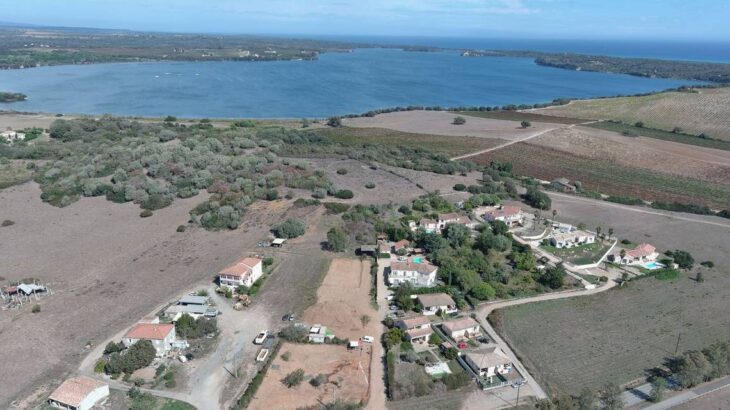Türkiye’s coastal town of Fethiye, which is famous for its natural beauties and historical sites, found an 1800-year-old statue head thought to belong to the god Apollo during excavations in Fethiye castle.
The castle was originally built during the time of the ancient Lycian city of Telmessos. Fethiye Castle was vital in protecting the ancient Lycian city of Telmessos. The fortress was an essential part of the city’s defensive infrastructure, ensuring the safety and security of its inhabitants.
This ancient city was the largest and most important in the Lycian region, making the castle a significant structure for the area. The Castle of Fethiye has witnessed several transitions in its history. During the Byzantine period, it underwent significant reconstruction, and later, it was taken over by the Knights of St. John.
Under the direction of the General Directorate of Cultural Heritage and Museums of the Ministry of Culture and Tourism, in cooperation with the Muğla Governorship, the district governorship, Fethiye Municipality, and Fethiye Museum, the excavation work at the castle, which is situated in the Kesikkapı neighborhood of the Fethiye district, is still ongoing. Three years ago, the excavation got underway.
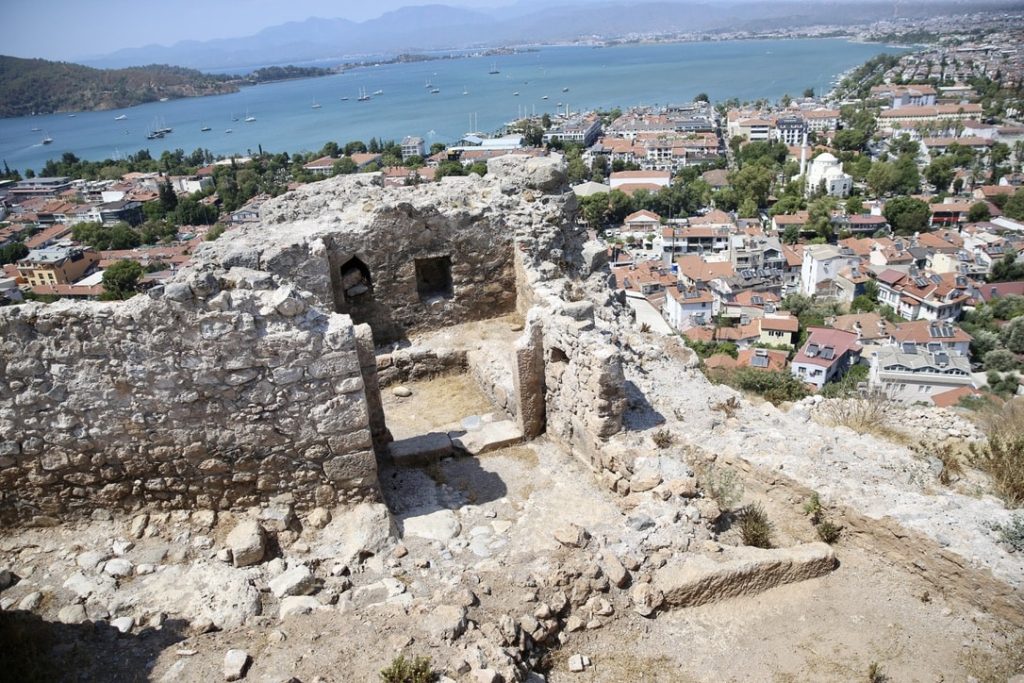
During the excavation, which was conducted under the scientific responsibility of Professor Kadir Pektaş, a statue head believed to belong to Apollo was discovered in the castle wall.
📣 Our WhatsApp channel is now LIVE! Stay up-to-date with the latest news and updates, just click here to follow us on WhatsApp and never miss a thing!!
Pektaş, who is also the scientific director of the Fethiye Castle excavation, informed Anadolu Agency (AA) that the excavation work is part of the Ministry of Culture and Tourism’s “Legacy to the Future” project.
“During our work in the inner castle, in the area where the flagpole is located, a statue head, which we estimate to date back to the period around the A.D. second century, was found inside the wall. This is a very important piece for us. In addition, coins from the Turkish-Islamic period, the Ottoman period, and the Menteşe Beylik were also discovered,” he said.
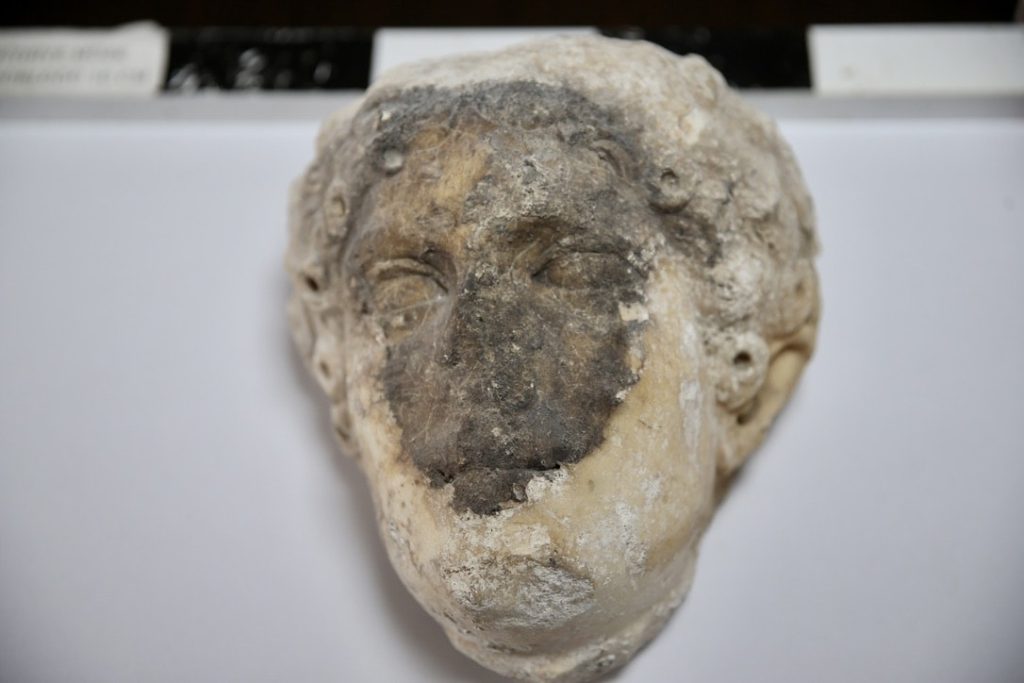
He mentioned that research is ongoing to determine to whom the statue head belongs, saying: “The statue head may belong to Apollo or another historical figure.”
In the interior of the fortress, cannonballs, items used in daily life and ceramic fragments were also unearthed.
Cover Image: AA

